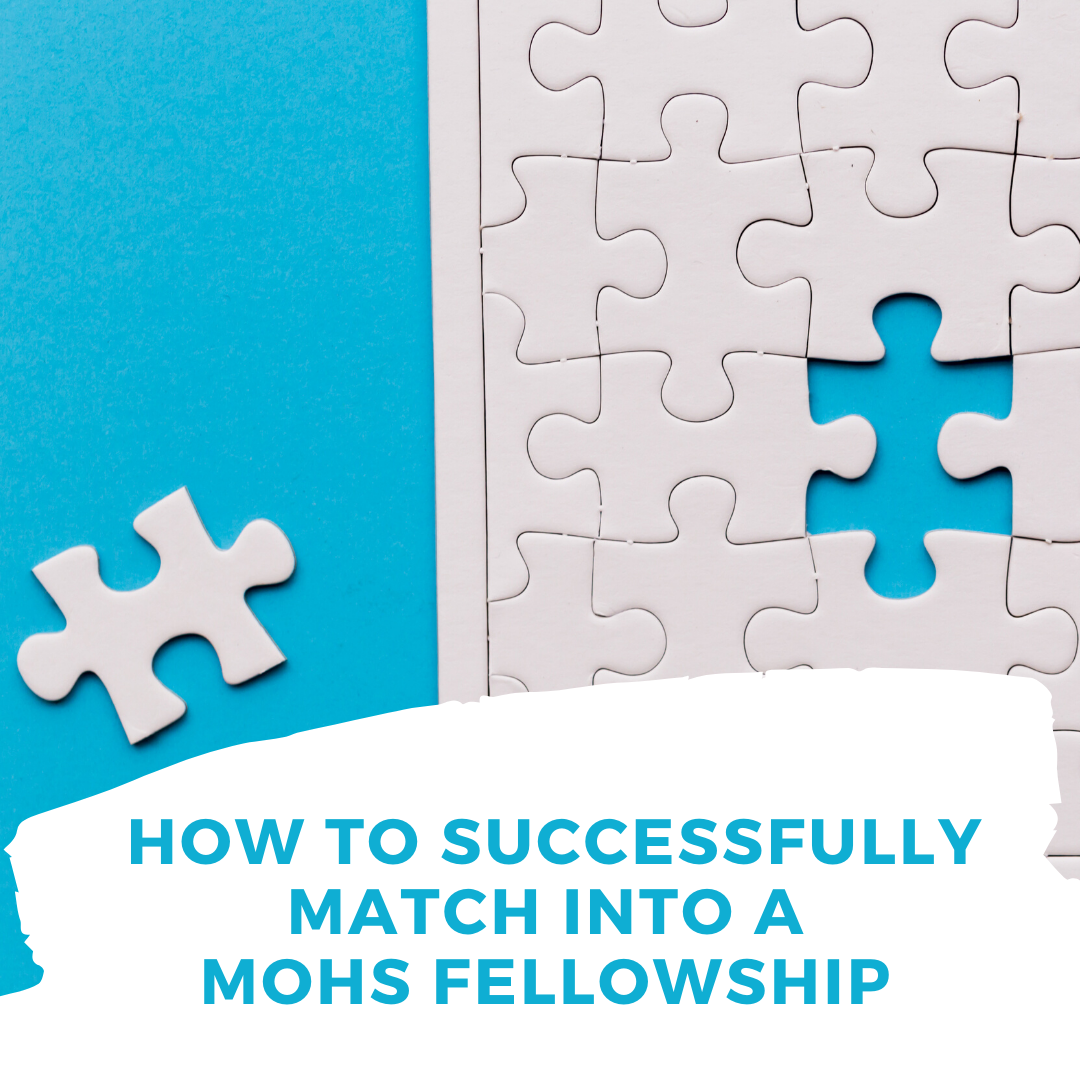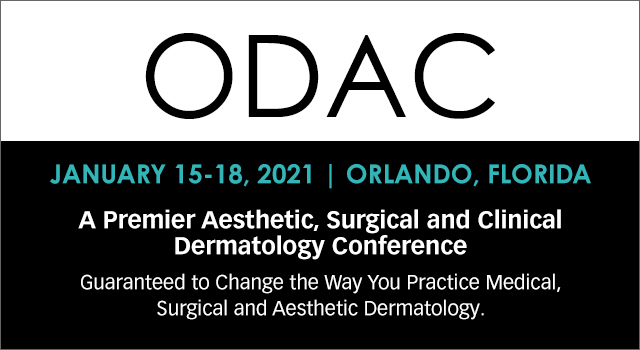After all of the hustling and extra work you put in during medical school, you are now here living your best derm resident life. With each passing day, you can taste how much closer you are to being finished with your training, you can smell the signing and/or relocation bonus from your first job, and almost touch the freedom that will come with being an attending. But are you really ready to just give in and start living the good life??? Do you opt to cruise down the home stretch to the finish line, or do you put the ax to the grindstone, defer living the dream for one more year, pursue a fellowship, and sharpen your skill set?
Unless you start residency certain that you want to become a Mohs surgeon, this decision is often not an easy one to make. And to add an additional layer of stress and complexity to the process, it is a decision that should ideally be arrived at somewhat early in your training, given how competitive Mohs surgery has become as of late. For those of you who are currently grappling with whether and how you should pursue a Mohs fellowship, fret not! At the 2020 ODAC Dermatology, Aesthetic & Surgical Conference, Dr. C. William Hanke, who is the director of the Micrographic Surgery and Dermatologic Oncology Fellowship Training Program at Ascension at St. Vincent Hospital in Indianapolis, provided his expert take on how to successfully match into a Mohs fellowship.
This post will provide an overview of the following:
-
- Choosing a program
- Compiling a strong application
- Understanding what program directors are looking for in an applicant
- Slaying your interview
- Buttering up the program director pre- and post-interview
- Contingency plan if you don’t match
But first, let me share a few of my “Aha!” moments from Dr. Hanke’s talk, in the hope that they will entice you to read on…
-
- Not all fellowships are created equal!! Read on to learn about some of the ways that they vary, and how this may impact the quality of your training.
- There are some key elements that can make or break an application. Keep reading to learn how you can lock these down!
- Schmoozing is an oft-overlooked and underutilized art. Want to learn how you can tactfully express your interest at your program of choice? Well then keep reading!
Although Mohs surgery has been one of my favorite aspects of residency, I opted to pursue an American Society for Dermatologic Surgery cosmetic fellowship instead. While this post will not discuss how to choose and lock down a cosmetic fellowship, please feel free to reach out to me on Instagram @huerth.md for any questions you might have. I will be heading to my top choice fellowship in August of this year, and I am happy to share my perspective and tips with you!
Choosing a program
Not all fellowships are created equal! Some fellowships are focused exclusively on Mohs surgery, while others will also provide experience with clinical trials and cosmetic procedures. The practice setting—academic vs private, group vs solo—can also have a significant impact on the fellowship experience. For example, if you are at an academic program, expect to work alongside residents and medical students in clinic, and in the context of surgical didactics (which you will likely be leading). If this sounds appealing to you, then you should consider a fellowship at an academic center, because private practice programs will offer these experiences to a lesser degree or not at all. Also be aware that more established programs are more likely to have a larger volume of cases, far beyond the minimum required for ACGME accreditation, while some of the newer programs might not be quite there yet. Surprisingly, some programs will do very little reconstruction and will send repairs to plastic surgery instead (so if you like to suture, these programs probably won’t be a good fit). Take into account whether you vibe with your prospective program director—you will not only be working very closely with this individual during your fellowship, but you will also want to keep them as a mentor for many years to come. There is nothing wrong with doing a little bit of Internet stalking to get a sense of a PD’s online reputation, in addition to mining your surgical attendings for the deets. Finally, some programs will prefer to select their fellows from among their own residents, so in reality, there are certain places where you may not be seriously considered, despite your having been invited for an interview.
You are probably asking yourself how you are possibly going to suss all of this out among the 70+ Mohs fellowships that are currently ACGME accredited. A good place to start is with your residency’s surgical director—ask them what they know about different programs, and also ask them who they know (more on this in the next section on applications). You should also talk to anyone you know who has been through the interview process recently—these folks may be a bit more likely to give you their honest impression of programs they visited while on their own interview trails.
Most importantly, this is YOUR LIFE, so don’t be shy about factoring in where you want to live, and what type of quality of life you wish to have. That being said, programs with a lower density of Mohs surgeons in the area might have a wider variety of complex cases—so you might have to confront a choice between quality of life and quality of training if you are strongly inclined to stay in a major urban area with a high density of Mohs surgeons.
Compiling a strong application
Your resumé should convey that you are a hard worker, that you are dedicated to the subspecialty, and that you are balanced. The impact that your test scores (yes, some PDs will still care about your USMLEs) and medical school transcripts have on whether you are considered is highly variable. Since this is in the past and beyond the scope of your influence at this point, one thing you can do is demonstrate an interest in scholarly work. There is no magic number or set minimum in terms of the number of publications you should have, but Dr. Hanke did note that “no publications is not a good number.” You should ideally endeavor to have 4-5 publications, 1-2 of which have been published already.
Do not underestimate the power of the personal statement!!! Everyone is going to find a way to look good on paper, so the personal statement is an often underutilized opportunity to distinguish yourself from other applicants. Use your statement as a way of sharing your personal narrative with honesty and sincerity. And above all else, do not pander—nobody wants a panderer as a fellow.
Finally, choose your letter writers wisely. The ideal letter writer is a person whom the PD knows well, and who can provide a personal and glowing recommendation of you. Conversely, a merely lukewarm endorsement from a writer who is close with your prospective PD can inflict a lot of damage. Additionally, be prepared for PDs to call your letter writers and department chair to verify that you are as good in real life as you appear on paper.
Understanding what program directors looking for in an applicant
This can vary greatly. For example, some PDs might place a premium on maturity and life experience, while others will select applicants based on their potential to function well as a member of the team. Other PDs might be seeking applicants who will make significant contributions to the specialty. Since it is difficult to know what the individual preferences of a given PD will be, you should endeavor to demonstrate elements of all of the aforementioned both in your application and during your interview. Interestingly, extensive surgical experience and skill is not a strict requirement, as the first few months of the program will be heavily focused on skills training.
Slaying your interview
Do your homework and know who you will be interviewing with. Read the articles your PDs and potential faculty have published, and know their interests. Familiarizing yourself with this literature is a potentially rich source of conversational fodder, given that interviews can in some instances last anywhere from 1 – 2 full days. Also, be aware that the PD is not the only person who will be vetting you on interview day—lab and office staff are also called upon to share their impressions of candidates, regardless of how brief their interactions with you may be. So be nice to everyone!
Buttering up the program director pre- and post-interview
While in all honesty it may not do anything to enhance your chances of matching at certain programs, being polite and consistent about expressing your interest in a program could potentially help your application. You could start by trying to do away rotations at programs you are interested in. If you don’t have the elective time for this, or if the programs that you are interested in do not host away rotators, you could still reach out to the program director via email, or by intercepting them at a conference, to introduce yourself and express your interest in the program. Fast-forwarding ahead to the post-interview period, if there is a program that you really want to be at, reach out to the PD and inform them of this. Know that even if you send multiple follow up notes after your interview, you might not get a solid commitment from them. Still, it doesn’t hurt to do this if you can pull it off in a tactful and non-annoying way.
Contingency plan if you don’t match
This is a painful scenario, but it will happen to some people, given that the number of applicants per cycle always far outnumbers the number of positions. If you don’t match, don’t despair. Instead, use it as an opportunity to truly assess how badly you want to become a Mohs surgeon. If you can’t envision a career wholly bereft of stages, flaps, and grafts, then you are just going to have to dig deep, summon your grit, put in the time and work to strengthen your application and try again. You could try to crank out more publications before the next application cycle, but a potentially more useful approach would be to complete an additional fellowship in the interim—consider completing a dermatopathology or cutaneous oncology fellowship at another major academic institution. Whatever path you choose, it should strongly convey that you are both tenacious, and motivated to continue developing yourself academically, even in the face of a major (and hopefully temporary) setback.
So are you going to go for it? Have you already successfully navigated the Mohs fellowship application process? Do you have any additional advice that you can share?
Please tell us all about it in the comments at the end of this post and on Instagram @nextstepsinderm!
Dr. C. William Hanke is the Founder and Director of the one-year fellowship training program in Micrographic Surgery and Dermatologic Oncology at Ascension St. Vincent Hospital, Indianapolis. He is also Visiting Professor of Dermatology at the University of Iowa-Carver College of Medicine.
This information was presented by Dr. C. William Hanke at the 17th Annual ODAC Dermatology, Aesthetic and Surgical Conference held January 17–20, 2020 in Orlando, FL. The above highlights from his lecture were written and compiled by Dr. Kimberly Huerth, Chief Dermatology Resident at Howard University.
Did you enjoy this post? Find more on Navigating Residency here.


